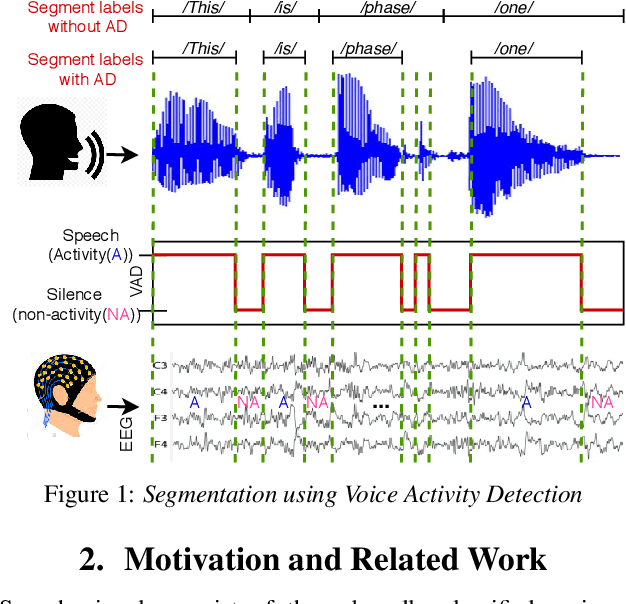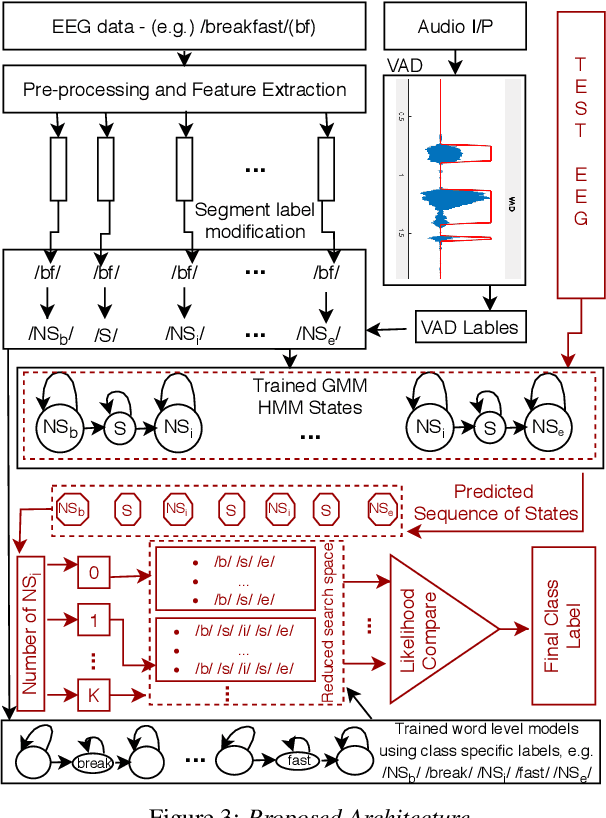The "Sound of Silence" in EEG -- Cognitive voice activity detection
Paper and Code
Oct 12, 2020



Speech cognition bears potential application as a brain computer interface that can improve the quality of life for the otherwise communication impaired people. While speech and resting state EEG are popularly studied, here we attempt to explore a "non-speech"(NS) state of brain activity corresponding to the silence regions of speech audio. Firstly, speech perception is studied to inspect the existence of such a state, followed by its identification in speech imagination. Analogous to how voice activity detection is employed to enhance the performance of speech recognition, the EEG state activity detection protocol implemented here is applied to boost the confidence of imagined speech EEG decoding. Classification of speech and NS state is done using two datasets collected from laboratory-based and commercial-based devices. The state sequential information thus obtained is further utilized to reduce the search space of imagined EEG unit recognition. Temporal signal structures and topographic maps of NS states are visualized across subjects and sessions. The recognition performance and the visual distinction observed demonstrates the existence of silence signatures in EEG.
 Add to Chrome
Add to Chrome Add to Firefox
Add to Firefox Add to Edge
Add to Edge